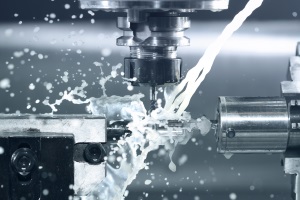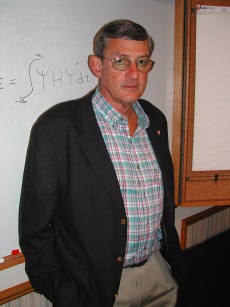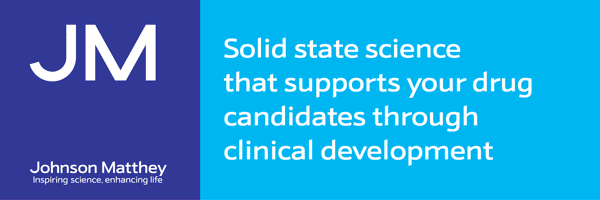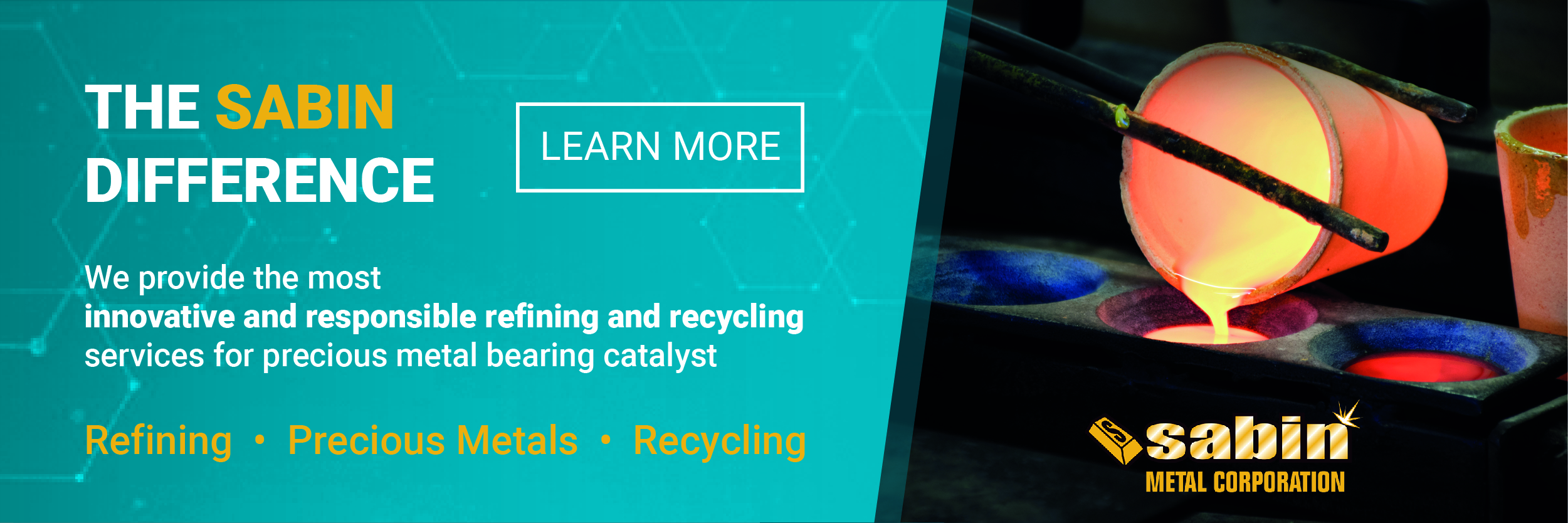Materials Science
Advances in tribology and lubrication engineering 18th July 2018
By our Editorial Team
Lubrication is central to increasing energy efficiency in manufacturing and lowering costs. Chemicals Knowledge sp

Lubrication is central to increasing energy efficiency in manufacturing and lowering costs. Chemicals Knowledge spoke to Robert Gresham, Director of Professional Development at the Society of Tribologists and Lubrication Engineers (STLE) about recent technological advances and how they are contributing to economic, industrial and commercial advantages.

Friction in the workplace?
The influence of friction, lubrication, and wear on the efficiency and lifetime of machinery has been recognized for decades.
The influence of friction, lubrication, and wear on the efficiency and lifetime of machinery has been recognized for decades.
“The main sources of friction and wear in the 21st century remain much the same as they’ve always been, especially in the fields of transportation and manufacturing,” explains Robert Gresham, Director of Professional Development at the Society of Tribologists and Lubrication Engineers (STLE). “We have the same fundamental challenges, but now we have a greater focus on trying to operate machinery at high efficiencies.”
As we face facing the dual challenges of energy shortage and global warming, the ability to control friction – and reduce inefficiencies – has become a top priority. Improving output, reducing maintenance requirements and minimizing breakdowns, as manufacturing tolerances become finer, tighter and more precise, are all leading to a need for lubricants with lower viscosity, greater reliability and lower emissions.
“These are the big drivers in the friction business right now,” says Gresham. “As a general rule, about 20% of a developed country’s GDP is lost to friction and wear by some means – mainly transportation and manufacturing.
The science of friction, lubrication and surface wear is called tribology, and its economic and commercial impact is vast. For example, it has been calculated that only 21.5% of fuel energy is used to move a passenger car; one-third is used to overcome friction in the engine, transmission, tyres and brakes, and direct frictional losses, excluding braking friction, account for 28% of fuel energy.1 In fact, experts have estimated that more than 30% of the 26 quads of energy (1 quad = 1015 British thermal units [BTU] or 1.055 × 1018 joules) currently consumed in the US by the transportation sector alone is spent to overcome friction and wear.2
However, proper tribological procedures could save hundreds of billions of dollars every year. It has been estimated that tribological advances may save nearly 10.7 quads across the transportation, industrial and utilities sectors in the US – this is about 11% of total energy expenditure from those sectors.2
Sustainability
The ability to control friction becomes an essential step in seeking sustainable technologies.
The ability to control friction becomes an essential step in seeking sustainable technologies.
“When we talk about sustainability, we usually refer to more effective use of materials, so one of the things we talked about earlier – making machines run more effectively and reliably – is all part and parcel of how these advances can help make the future more sustainable,” says Gresham. “We will always need energy, but if we can do more with less of it, we will be heading for a more sustainable future.”
In addition, Gresham believes that the practices of green chemistry can be applied to tribology. By choosing more biodegradable, non-toxic, non-polluting chemistries in the development of new lubricants and their additives, benefits could be achieved.
“It’s not an easy task,” admits Gresham. “But it should really be taken on board as an operating philosophy when creating a new lubricant.”
Smoothing the way
Designing lubricants involves a careful study of the conditions under which they will be applied, including engine speeds, powers, maximum and minimum temperatures, all ensuring a balance between performance, efficiency and durability. Multiple strategies can be adopted for energy and material conservation through tribology. Friction, after all, is an indicator of energy efficiency. If we could reduce unnecessary energy loss, and increase energy efficiencies, we could address a significant proportion of the impacts of friction and wear.
Designing lubricants involves a careful study of the conditions under which they will be applied, including engine speeds, powers, maximum and minimum temperatures, all ensuring a balance between performance, efficiency and durability. Multiple strategies can be adopted for energy and material conservation through tribology. Friction, after all, is an indicator of energy efficiency. If we could reduce unnecessary energy loss, and increase energy efficiencies, we could address a significant proportion of the impacts of friction and wear.
On a macroscale, lubricants work by keeping two contacting surfaces apart by virtue of a fluid film, or in the case of solid lubricants a solid film. On a microscale, lubricant additives assist the fluid by attaching their atoms to the mating surfaces by a variety of mechanisms, and they act further by reducing or eliminating deleterious chemical reactions such as corrosion and oxidation. However, Gresham is most enthusiastic about lubrication on a nanoscale.
“What do the first few layers of atoms do?” he asks. “In fact, what you see are tribochemical reactions that take place between the first layers of atoms in the mating surfaces. These reactions provide instantaneous heat, leading to effects that could be good or bad. Obviously, we want to increase the good effects and minimize the bad ones. These interactions are all part of active research at the moment.”
Making lubricants
Key players in the lubricant industry include any companies producing base oils. The market for synthetic lubricant base stocks is dominated by three product groups – polyalphaolefins (PAO), esters, and polyalkylene glycols (PAG). These synthetic lubricants, which are formulated products consisting of synthetic base oils plus additives, have physical and chemical properties that are generally superior to those of conventional mineral oil-based lubricants. However, it must be noted that through more sophisticated refining processes, mineral oils – the so-called group III and group III+ oils – can approach the properties of pure synthetics. Indeed, mineral oils and synthetics are often blended to get the right balance between performance and cost.
Key players in the lubricant industry include any companies producing base oils. The market for synthetic lubricant base stocks is dominated by three product groups – polyalphaolefins (PAO), esters, and polyalkylene glycols (PAG). These synthetic lubricants, which are formulated products consisting of synthetic base oils plus additives, have physical and chemical properties that are generally superior to those of conventional mineral oil-based lubricants. However, it must be noted that through more sophisticated refining processes, mineral oils – the so-called group III and group III+ oils – can approach the properties of pure synthetics. Indeed, mineral oils and synthetics are often blended to get the right balance between performance and cost.
Biolubricants are made from a variety of vegetable oils, such as rapeseed, canola, sunflower, soybean, palm and coconut oils. Biolubricants will – at some point – biodegrade. This sounds great but, as always, there’s a fly in the lubricant…
“On top of lacking the performance of highly-engineered lubricants, the problem with biolubricants is that they have double bonds in their chemistry,” explains Gresham. “That’s not good because it leaves them subject to oxidation. Producers end up refining the lubricants to remove the double bonds, then they add oxidation inhibitors, but these changes make the biolubricants more costly and less biodegradable.”
These challenges tend to make biolubricants application specific, usually as a one-pass lubricant that is used just once, and in low volumes, such as a chain saw bar oil.
Recent advances
At the beginning of the 21st century, a new era of nanoscale friction came into play, with the arrival of nanotechnology. Our understanding of atomic and molecular friction has since expanded rapidly, and the use of nanoparticles as lubricant additives and as fillers in nanocomposites for improving anti-friction and anti-wear properties, is a hot research topic.
At the beginning of the 21st century, a new era of nanoscale friction came into play, with the arrival of nanotechnology. Our understanding of atomic and molecular friction has since expanded rapidly, and the use of nanoparticles as lubricant additives and as fillers in nanocomposites for improving anti-friction and anti-wear properties, is a hot research topic.
“Really, in terms of recent developments, it goes back to tribochemical reactions at an atomic level, declares Gresham. “Atomic force microscopes can evaluate friction and wear at a molecular level, and advanced computational abilities give us the ability to simulate reactions, allowing us to understand conventional systems on a new level, and enabling chemists to design molecules that work within those systems.”
Also, since 2001, the idea of using ionic liquids in lubrication, as neat lubricants and as additives, has been a growing research field. These liquids are non-volatile, non-flammable, have a broad liquid range, and they mix well with organic compounds.
“They are good for special applications such as high temperature environments, where money is no object!” points out Gresham. “But so far, ionic liquids are still primarily at the research level – they haven’t been established for significant commercial activity yet.”
There has also been research into the use of graphene. “To some extent, when graphene was first synthesized it was a solution looking for a problem,” laughs Gresham. “But it has some potential in this field. Graphene is unique to graphite in that it doesn’t depend on the environment as much to provide lubrication. It performs well in very thin films and is useful in MEMs applications. Most studies are at the nano/micro scale – not so much in bulk scale. I’m not aware of any large volume commercial activity, so far.”
Trends and opportunities
“Additives is the place to be right now,” Gresham advises. “Additive companies are now being asked to produce new products that do the same things as existing ones but with non-polluting ingredients. And biodegradable additives, which will help the industry to produce greener products.”
“Additives is the place to be right now,” Gresham advises. “Additive companies are now being asked to produce new products that do the same things as existing ones but with non-polluting ingredients. And biodegradable additives, which will help the industry to produce greener products.”
Gresham is referring, in particular, to global demands for reduced phosphorous and zinc, for example. There is considerable demand for lubricant additives that have the same corrosion and load resistance as existing products, but without the heavy metal elements or toxicity. There is also demand for lubricants lasting longer, so lower volumes are required, which in turn puts the oil under more and more shear stress, which induces oxidation.
“So we also need even better oxidation inhibitors,” Gresham adds. “Virtually all applications need better oxidation stability, but with lower cost and a lower potential for pollution and toxicity.”
.jpg)
Finally, from a scientific viewpoint, the key opportunities, Gresham believes, lie in the atomistic field for which he has already shown such enthusiasm.
“Really, it is the continued better understanding of what really happens in these highly varied and complex systems. Once you understand it, you can fix it,” he concludes.
References
- Holmberg K et al. Tribol Int 2011;47:221-34.
- US Department of Energy. Tribology Opportunities for Enhancing America’s Energy Efficiency. February 2017.
Interview with:
Robert Gresham, Director of Professional Development at the Society of Tribologists and Lubrication Engineers (STLE), 840 Busse Hwy, Park Ridge, IL 60068, USA
T: +1 847 825 5536
www.stle.org
Robert Gresham, Director of Professional Development at the Society of Tribologists and Lubrication Engineers (STLE), 840 Busse Hwy, Park Ridge, IL 60068, USA
T: +1 847 825 5536
www.stle.org



